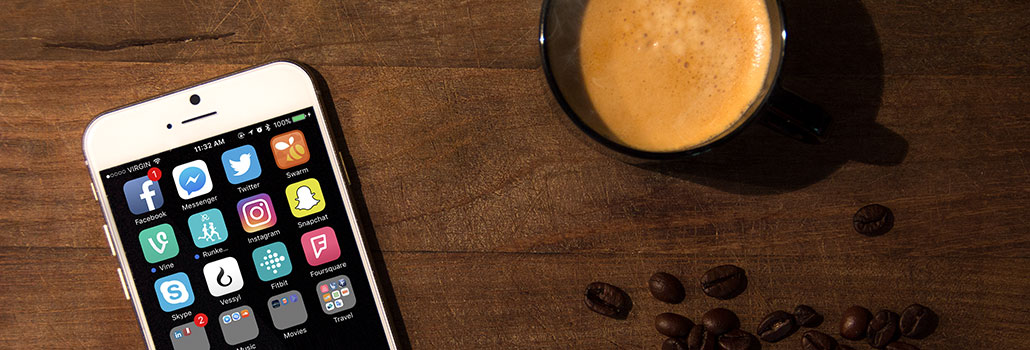BSTRO’s 2017 Digital Marketing Predictions
December 19, 2016The digital gifts of 2016 were plentiful, both in quantity and quality. Drones! Virtual reality headsets! Exploding Samsung tablets! And all of that emerging technology influenced the landscape of digital marketing.
Audiences were hanging out on new platforms and conducting searches different ways. It was up to us marketers to try to get ahead (and in front) of their audiences, and to give them an amazing experience whenever and wherever they discovered our content.
As a tech-centric marketing agency, the BSTRO team has been digging all of these advances in martech. Naturally, we’re looking ahead to what exciting new mediums and technologies we’ll explore for our clients next year.
We sat down some of our in-house experts and asked them to share their digital marketing predictions for 2017. Here they are.

Email Marketing
Let’s just get this up front: email marketing is a huge deal. Getting into your customers’ personal inboxes is a victory for your marketing efforts. Getting those emails opened and that content read – that’s where the art and science of email marketing comes into play.
Will email marketing continue to reign supreme in 2017? BSTRO’s Email Campaign Manager Courtney Fantinato says yes – and emails will become much more interactive.
“Interactive emails have been making headlines in 2016, and that likely will continue into 2017,” she explained. “However, taking on interactivity in email can be a big feat – the support across email clients varies, and it requires a lot more hands-on QA to test that the interactivity actually works!”
Fantinato said that subscribers are increasingly savvy, and expectations in 2017 will be higher than ever. Customers will expect a welcome email with some kind of discount, and timely, relevant content. In order to meet (and exceed) this demand, marketers need to segment emails to provide personalized content.
Fantinato sees no signs of mobile email marketing slowing down in the coming year, and advises marketers to gather as much data as possible on which devices and email clients their subscribers are using, and using that data to inform decisions.
“In 2017, there’s really no reason to not have responsive email. It provides a much better user experience across email clients and devices — and those who choose not to, will get left behind.”
The biggest challenge marketers will face, according to Fantinato, is gathering the correct data to create meaningful subscriber segments. She recommends getting comfortable with testing – if you aren’t already – to determine what keeps your subscribers engaged and coming back for more.
“Every email is an opportunity to test, and no result is a fail — it’s all about learning what gets your subscribers engaging with you,” she said. “Sure, there are industry metrics, but no two lists are exactly the same. What works for one, might not work for another. The sky really is the limit when it comes to testing opportunities.”

Tech in Marketing
Did we mention how much we love technology? L-O-V-E love it. We see marketing and technology as an inseparable duo, and trends heading into 2017 seem to agree. From mobile usage and apps to AR and chatbots, the future is now. Are you ready?
“Smartphone usage will continue to grow, and with that mobile targeted marketing and mobile ad spend will grow as well,” said BSTRO Creative Director Antonio Rusevski.
VP of Technology Kevin Chan agreed, saying, “We’re glued to our phones. There are more mobile-only social media platforms now, such as Snapchat, Instagram, Periscope. This trend will definitely continue next year.”
Rusevski foresees a continued rise in popularity of paid media on those same apps, and an increase in purchases made on mobile devices. Chan added that live streaming video as a brand marketing platform will continue to gain traction. Instagram notably recently joined the host of social media apps that offer live video.
Making mobile a priority is key for any businesses who haven’t already gone responsive. Search is conducted on mobile over desktop more than ever, and in order to rank in Google search results, brands need to get with the times.
What about those ultra-futuristic technologies, augmented reality and virtual reality?
“With the popularity of VR sets and AR glasses, marketers will experience an increased need for 3D content creation and 360 videos,” said Rusevski. “We are already seeing products coming up for shooting 360 videos, like Nikon’s affordable 360 camera.”
“AR will overtake VR,” Chan agreed, “because it can be better integrated with different marketing channels.”
Chan also predicts marketers will increase use of automation and chatbots, and see a need for better data visualization. “Connecting the dots and finding the right combination of marketing channels for your brand is key. More data means more opportunities.”

Social Marketing
With popular social media platforms in constant competition to offer the most complete user experience (we’re looking at you, Facebook API), it’s pretty clear that the importance of social media marketing will continue to grow in 2017.
“Social insights will inform bigger marketing plans,” said Lisa Schaffer, BSTRO’s Director of Business Development. “Omni-channel marketing will definitely dominate, even more than it already has in 2016.”
If you think your content and social efforts are already tight, think again. Schaffer sees even further alignment of content and social marketing, with a need for brands to pour significantly more effort into creating relevant human marketing experiences everywhere that their customers are.
“Storytelling will lead it all,” said Schaffer. “For example, video might be one execution, but it will have other tentacles branching out to other mediums and platforms to create a fully layered and engaging experience.”
And which social media platform will rule them all in 2017?
“The future belongs to Pinterest,” said BSTRO Creative Director Ron Woloshun. “The combination of evergreen, immediately accessible content, brand friendliness, and shopability — all organized by powerful visual search instead of a linear timeline — is something that no other platform has even come close to achieving. Unless Snapchat has some tricks up its sleeve…”
The most important thing marketers need to do to prepare for social marketing in the coming year is to let go of vanity metrics. “It’s no longer about engagement or exposure. It’s about the path your customers are taking to the conversions,” said Schaffer.

Design
With the need for engaging visual content on the rise, you need to make design a priority in your digital marketing strategy for 2017. “Design is an important part of digital marketing strategy – so should be part of conversation from the start to provide the best value,” said BSTRO Designer Damian Jolley.
Jolley sees a growing awareness that flashy ‘award-winning’ websites aren’t always the best for their audience, and a continued trend toward light, ultra-mobile-friendly websites that help users do what they need to do.
“I think we will see further development in mobile experiences for websites,” he said. “Further customization of that exact experience. Mobile menus are an issue for endless debate – and it doesn’t look like it will stop. Hopefully we will see further developments, solutions and standards for mobile menus on the web. Sticky navs are unfortunately still a thing in 2017, and will probably continue. But we may see other types and innovations here.”
Jolley also predicts something that many might find shocking: designers abandoning Apple.
“Microsoft is making huge steps in innovation and better tools for designers, and it could be an interesting year. Apple has clearly established itself as a lifestyle brand rather than a tech company, and their expensive machines might not hold onto the design market, who need high-powered innovative technology. I’m currently loyal to Apple, but the door is open. Bring it, Microsoft!”
Designer Stina Neston summed up the best advice for designers to mentally prepare for 2017: “Designers are going to have to do more out-of-the-box thinking. Don’t just design what is expected of you, design for what is possible.”

Content Marketing
This was definitely the year of content marketing.
We saw marketing budgets and strategies devoted to producing and managing content assets. We saw consistent metrics for measuring content marketing success, and a widespread understanding of the key components of a solid content marketing strategy.
BSTRO Content Marketing Specialist Pam Berg thinks it will expand even further in 2017.
“With a lot of businesses putting more budget into content marketing than traditional advertising, it’s going to go next-level,” she said. “What even is the next level for content marketing? Marketers will have to push ourselves to find out. New mediums, new formats. No excuses for bad visuals or bad grammar. Laurels will get dusty from us not resting on them.”
Berg expects that the trendiness of content marketing will mean less work for content marketers to justify increased spend and efforts. “But of course now that everyone is doing it – everyone is doing it. Audiences are being hit with this flood of content, and looking at none of it.”
How can marketers adapt to the content noise problem?
“Start with a serious strategy. Don’t do it just because everyone else is doing it,” Berg said. “Then figure out how to get niche-y, and find what truly connects with your audience. Don’t be one of the ten thousand articles with the same broad-appeal title. Be specific. You might not get a hundred engagements, but the ten you do get will be money.”
Berg’s advice for marketers hoping to find content marketing success in 2017 is straightforward: “Your content isn’t about your brand. It has to be one hundred percent driven by your audience’s needs. Who are they, what is their pain point, and how will you solve it – for free. Going for the promo in every article or social post is like a desperate pass on the first date. Just stop.”
Need help getting your 2017 digital marketing strategy ready to roll? Reach out! We’d love to hear from you.
